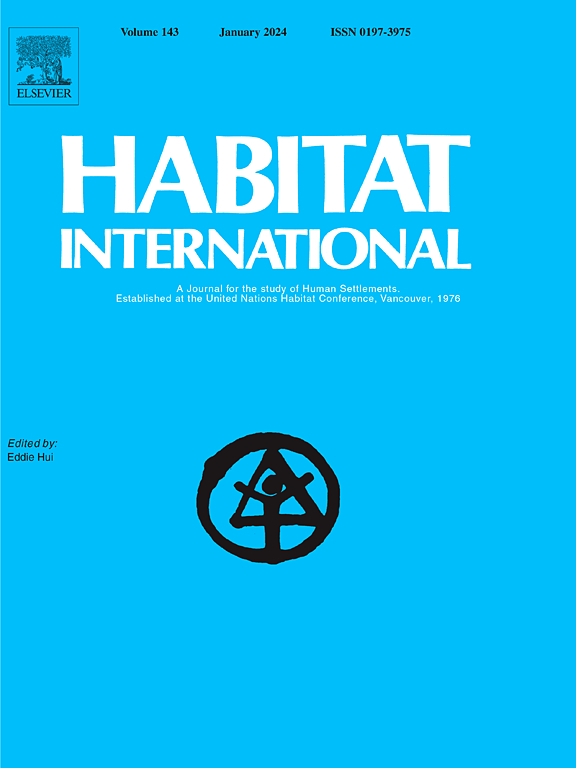通过多方案比较,确定粮食主产区耕地恢复的空间分布、土地类型和成效
IF 6.5
1区 经济学
Q1 DEVELOPMENT STUDIES
引用次数: 0
摘要
耕地保护在保障粮食安全方面发挥着举足轻重的作用。多年来,中国虽然遏制了耕地总量持续减少的趋势,但部分补充耕地质量不高。因此,中国仍需通过实施耕地修复(CLR)来加强耕地保护。然而,目前关于耕地修复的研究存在一定的局限性,忽视了耕地适宜性评价(CSE)的多维视角,未能优先考虑特定类型的次生土地进行修复。在此背景下,本研究以中国粮食主产区成都平原为研究对象,在对CLR的对象、内涵和目标进行理论分析的基础上,设计了四种CLR情景:可持续利用优先情景(PSS)、成本优先情景(PCS)、生态健康优先情景(PES)和综合修复情景(CRS)。这些方案旨在解决有关 CLR 的三个关键问题:在哪里恢复、恢复什么以及效果如何。研究结果表明,种植适宜度高的地区主要位于自然条件优越的平坦地区。园地和林地是耕地恢复的主要来源,恢复的水田分布较广,而恢复的灌溉地和旱地则集中在研究区的特定区域。此外,在所有方案中,耕地的恢复都能优化资源配置,显著提高粮食产量。值得注意的是,PSS 方案的结果最为理想,粮食产量显著增加了 59.20%。因此,我们强调,科学实施耕地保护制度对现阶段中国的耕地保护具有重要意义,并倡导开展耕地保护评价,以可持续利用为重点管理所有潜在耕地(PAL)。总之,本研究为其他面临类似挑战(如人均耕地面积有限、土地质量参差不齐)的国家或地区在耕地保护与可持续管理方面提供了有价值的启示和参考。本文章由计算机程序翻译,如有差异,请以英文原文为准。
Multi-scenario comparisons to identify the spatial distribution, land type, and effectiveness of cultivated land restoration in the main grain-producing area
Cultivated land protection plays a pivotal role in ensuring grain security. Although China has managed to halt the continuous decline in the total amount of cultivated land over the years, some of the complementary cultivated land is of poor quality. Therefore, China still needs to strengthen cultivated land protection by implementing cultivated land restoration (CLR). However, current studies on CLR have certain limitations, as they neglect the multidimensional perspective of cultivation suitability evaluation (CSE) and fail to prioritise specific types of secondary land for restoration. In this context, based on a theoretical analysis of the objects, connotations and objectives of CLR, focusing on the Chengdu Plain, China's primary grain-producing area, this study devised four CLR scenarios: the priority to sustainable use scenario (PSS), the priority to cost scenario (PCS), the priority to ecological health scenario (PES), and the comprehensive restoration scenario (CRS). These scenarios aimed to address three key questions about CLR: where to restore, what to restore, and how effective it is. The findings revealed that areas with high cultivation suitability values were located predominantly in flat regions with favourable natural conditions. Garden land and forest land emerged as the primary sources for CLR, with restored paddy field being more widely distributed, while restored irrigated land and dryland were concentrated in specific parts of the study area. Besides, the restoration of cultivated land led to a significant increase in grain production across all scenarios, with optimal resource allocation. Notably, the PSS scenario demonstrated the most promising results, resulting in a remarkable 59.20% increase in grain production. Therefore, we emphasise that the scientific CLR implementation is of great significance to cultivated land protection in China at this stage, and we advocate for conducting CSE and managing all potentially arable land (PAL) with a focus on sustainable use. Overall, this study offers valuable insights that can serve as a reference for other countries or regions facing similar challenges, such as limited per capita cultivated land and variations in land quality, regarding CLR and the sustainable management of agricultural land.
求助全文
通过发布文献求助,成功后即可免费获取论文全文。
去求助
来源期刊

Habitat International
Multiple-
CiteScore
10.50
自引率
10.30%
发文量
151
审稿时长
38 days
期刊介绍:
Habitat International is dedicated to the study of urban and rural human settlements: their planning, design, production and management. Its main focus is on urbanisation in its broadest sense in the developing world. However, increasingly the interrelationships and linkages between cities and towns in the developing and developed worlds are becoming apparent and solutions to the problems that result are urgently required. The economic, social, technological and political systems of the world are intertwined and changes in one region almost always affect other regions.
 求助内容:
求助内容: 应助结果提醒方式:
应助结果提醒方式:


